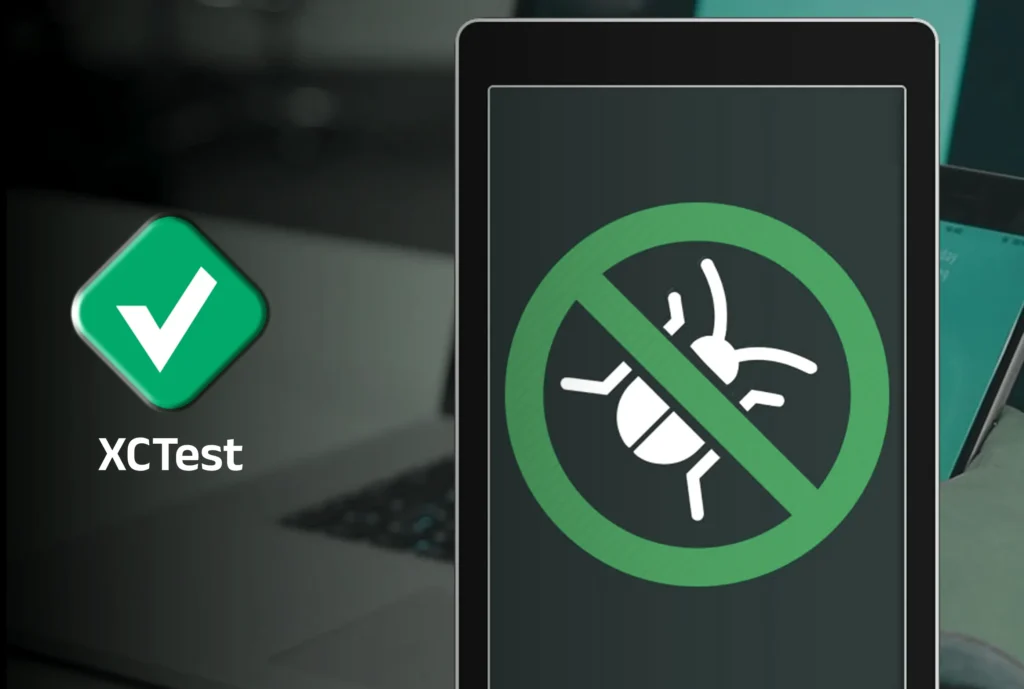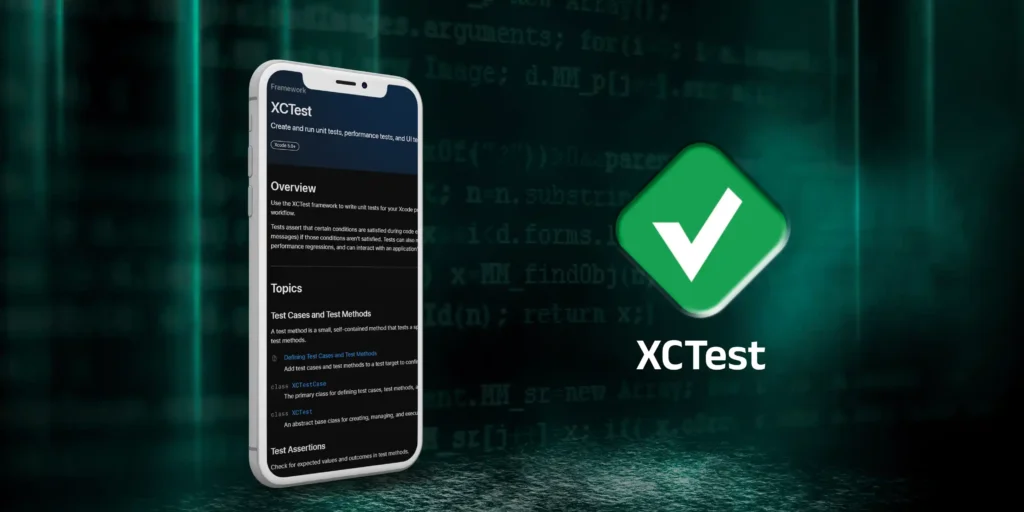XCTest is an important tool for iOS testing because it helps developers build test cases, make comments, and track performance metrics in their apps. Developers can maintain code integrity, find issues before the development process, and enhance overall app quality by implementing unit testing procedures with XCTest.
Introduction
Developers can create and execute unit tests for their code with the help of XCTest, a testing framework created especially for iOS development. It helps developers to test individual code units in isolation, which is important in ensuring the reliability and standard of iOS applications.

Ensuring the quality of your app is important in the field of iOS development. Consumers expect perfect, bug-free app performance. Testing becomes important in this situation, and one of the most important tools for iOS developers is XCTest.
Setting Up XCTest in Xcode
To ensure the reliability and efficacy of your iOS apps, you must set up XCTest in Xcode. Beginners can set up XCTest, the testing environment in Xcode, with the help of this simple tutorial.
Create a New Test Target: Go to File > New > Target in Xcode, then choose “Test” from the iOS menu. Your Xcode project will acquire a new test target as a result.
Write Your Test Cases: You can start writing your test cases as soon as you set up a test target. Test case techniques are used to confirm how particular sections of your code operate. The validations provided by it can be used to verify that your code works as designed and to check for expected results.
Run Your Tests: From the Xcode menu bar, choose Product > Test to launch your test cases after you’ve written them. Xcode will create your application and execute the tests, depending on each test case’s success or failure.
Analyse the Results: The Xcode test browser helps you to review the test results after it has finished performing. Test failures will be indicated in red, so it’s simple to identify any problems that require attention.
Writing Your First Unit Test Using XCTest
It’s important to keep to standard procedures when creating your first unit test with it to ensure that your code is tested efficiently. You may set up and run test cases using the XCTest Case class in XCTest, which provides the basis for writing unit tests in Xcode.
Here are some best writing tips to Follow:
Create Testable Code: Write your code with simple testing in mind. Usually, this involves dividing your code into more manageable, modular components that can be tested separately.
Test Edge Cases: Don’t just follow the easy route. Make sure your code can handle a range of scenarios gracefully by testing difficult situations and unexpected inputs.
Use Mocks and Stubs: Mocks and stubs are used for imitating outside dependencies, such as network requests and database queries, while testing code that depends on them. It helps you to focus on the behaviour of the code you’re testing in context.
Run Tests Regularly: Use testing in your development process frequently. Run your tests generally to find errors and stop regressions, usually right after making any changes to your code.
Advanced Techniques and Tips for Effective Testing with XCTest
Advanced methods can improve the efficiency and accuracy of your testing procedures in the framework of XCTest. Fake objects help the simulation of complicated situations and the separation of components for targeted testing in XCTest.
Reliable functionality in all scenarios is assured by reactive testing with expectations in XCTest, which allows for an in-depth review of code performance under different conditions.
By using XCTest for verification analysis, you may identify areas that need more testing and optimization and get useful information about how effective your test kit is. With it, you can improve the standard and reliability of your software testing by using these latest techniques and strategies.
Benefits of XCTest
Early Bug Detection: By using XCTest for test writing, developers can identify defects and regressions at an early stage of the development process, which reduces the time and effort needed for later debugging.
Improved Code Quality: By helping developers build modular, testable code, writing tests improves the overall quality and maintainability of the code.
Regression Preventing: Automated tests work as a safety precaution, ensuring that updates to the code don’t accidentally remove previously developed features.
Confident Rewriting: Developers can rewrite code with confidence if they have a robust suite of tests in place, as they can verify the behaviour of their code by testing.
FAQS
Open Xcode, add a Unit Testing Bundle target and write your test cases in the “Tests.swift” file that is generated to build XCTest in Swift. To confirm the behaviour of your iOS or macOS applications, run the tests.
To set up any assets required for testing, create a subclass of Testcase and implement the setUp() method. This will generate an XCTestCase class. In your override method, don’t forget to call super.setUp() to ensure the correct setup.
Just choose your test target in Xcode, then click Product > Test from the menu bar to launch XCTest. As an alternative, you can run every test in your project by typing Command + U.
Conclusion
With the help of XCTest, iOS developers can create automated tests that verify the functionality of their code, which is a very useful tool. By integrating testing into their development process, developers can ensure that their applications are reliable, error-free, and of high quality. It is an important tool to have in your test kit to develop excellent iOS apps, no matter your level of testing experience.
